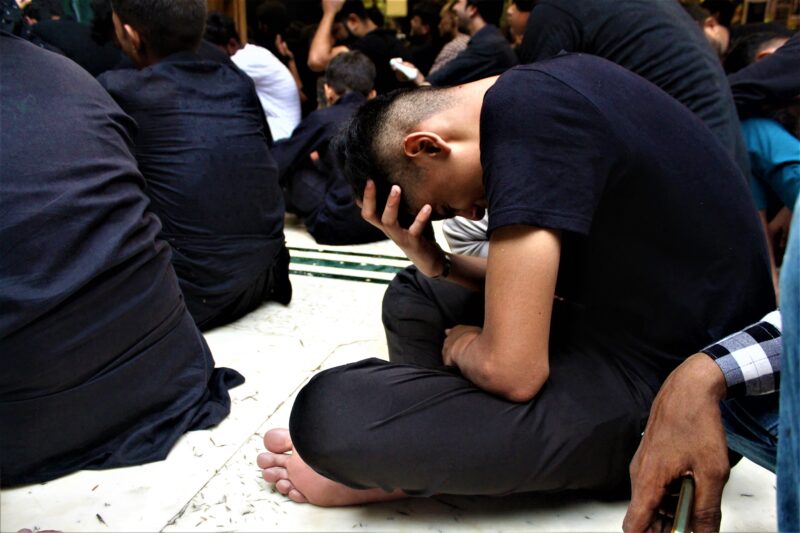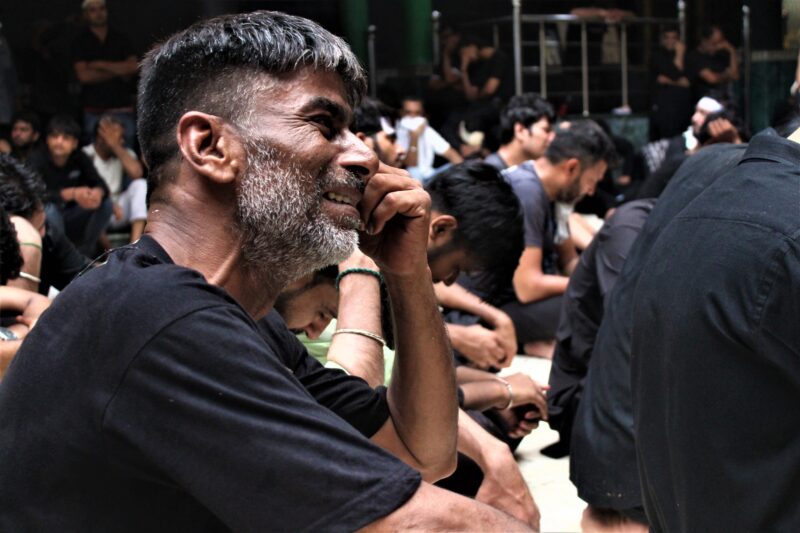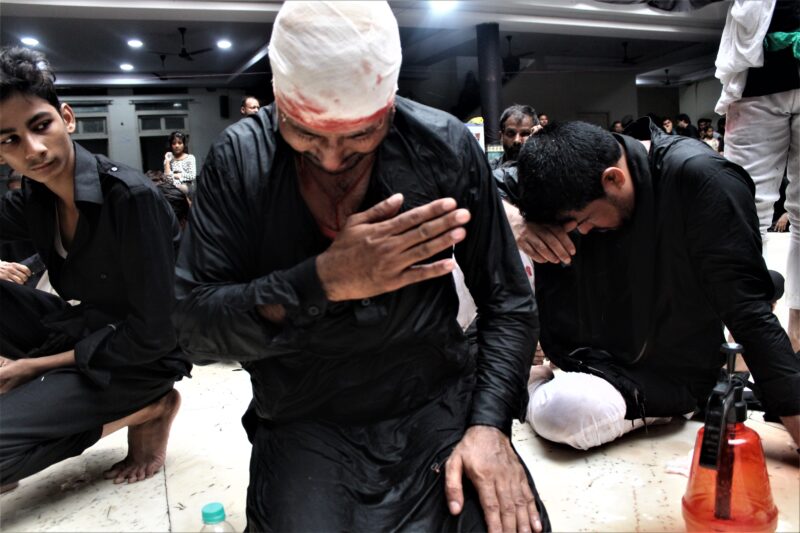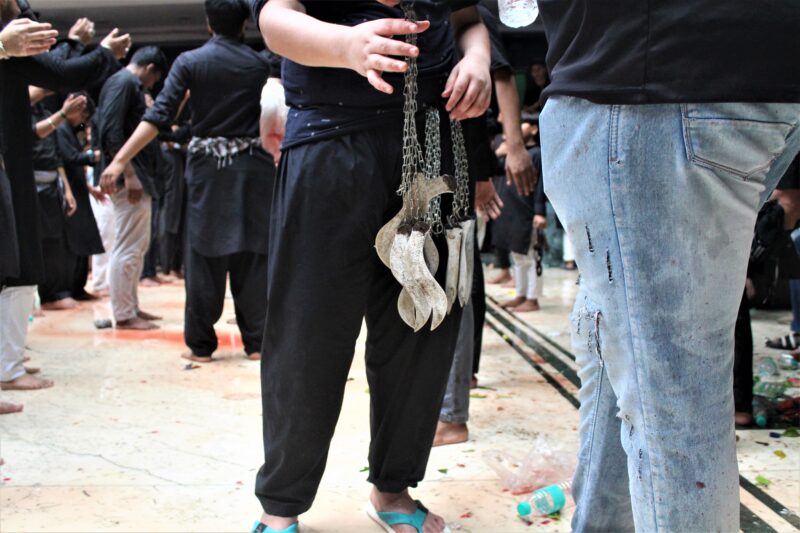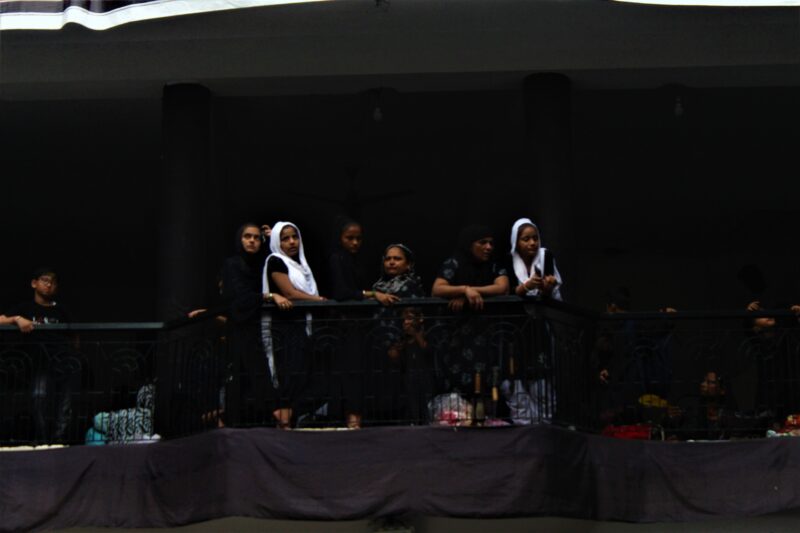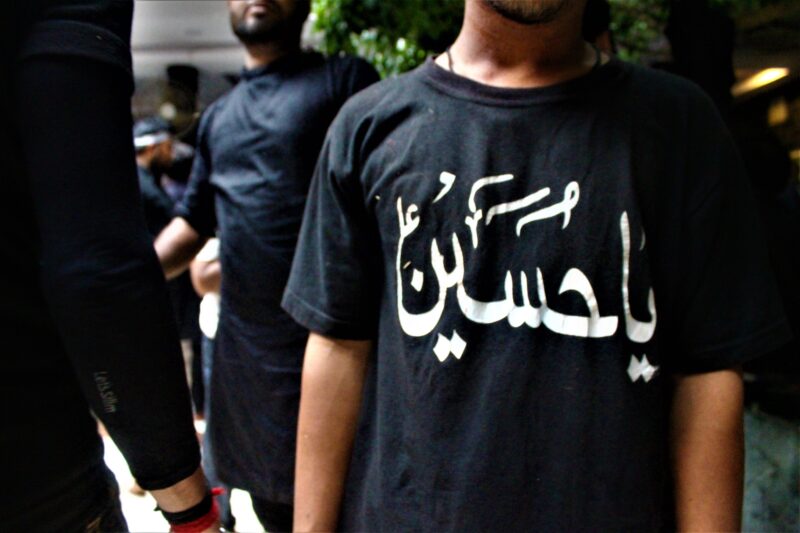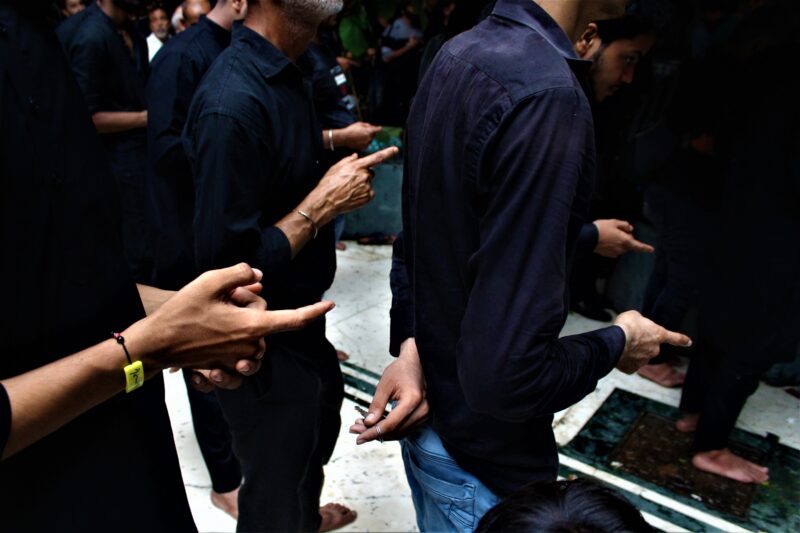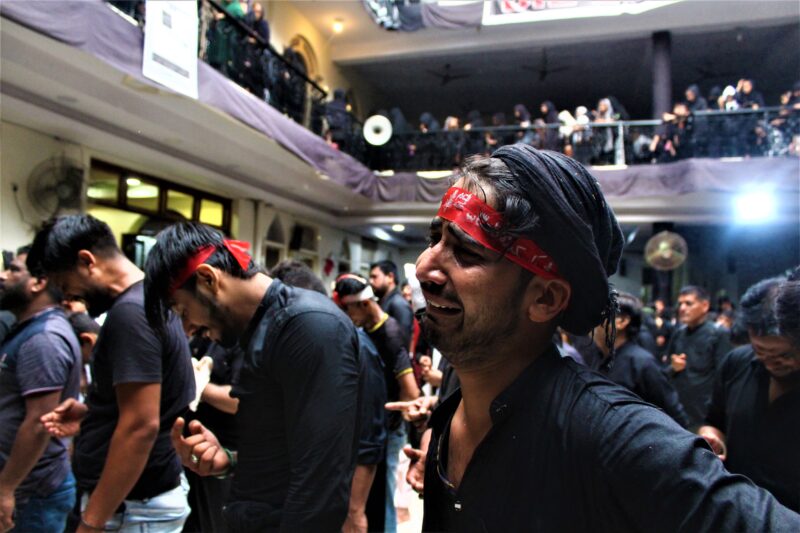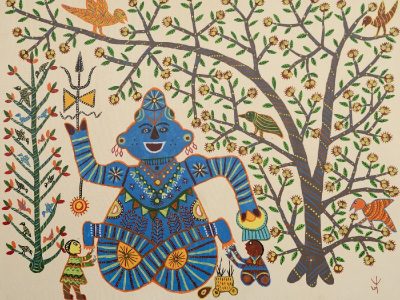In the Panj Shareef Dargah of Kashmiri Gate, the courtyard is bruised red. A stream of flailing bodies, all dressed in black, passionately wail Ya Hussain. With each utterance, they seem to blend into one entity, guided by the sound of noha and marsiya chanted by the leader standing on the pulpit in the prayer area.
On the balconies facing the courtyard, women, dressed in black veils and scarves, overlook the ritual. Some of them are sitting in a designated area, reading elegies and poetry. Almost all of them solemnly remember Hussain, Zainab, Qasim, and many others.
Ashura, the tenth day of Muharram (the first month of Islamic calendar), which was observed on July 29 this year, holds special significance in Islamic history, especially for Shia Muslims. It is a day of mourning and remembrance for the martyrdom of Imam Hussein ibn Ali, the beloved grandson of Prophet Muhammad, at the Battle of Karbala in 680 CE. Imam Hussein and his companions were killed by the forces of the Umayyad caliph Yazid I. Since then, the battle has been a defining moment in the fabric of Shia Islam.
Throughout the day, the community members, both young and old, honour the memory of the suffering and selflessness displayed by Imam Hussein and his followers. Parents encourage their children to remember the lesson of Hussein, and what the battle of Karbala taught the community – about resilience, oppression, loyalty, and devotion.
Many reflect on the tyranny and evil that continue even today, in many manifestations, and call for peace and sacrifice.
In the evening, the community gathers once again for the final ritual of the day, known as the Ziyarat Ashura. In this ceremony, the mourners visit the symbolic representation of the shrine of Imam Hussein, either within the mosque or Imambara, and pay their respects. This act of visitation, or ziyarat, is a means of seeking intercession from the Imam and drawing spiritual guidance from his exemplary life.
Here is walk-through of the event:
